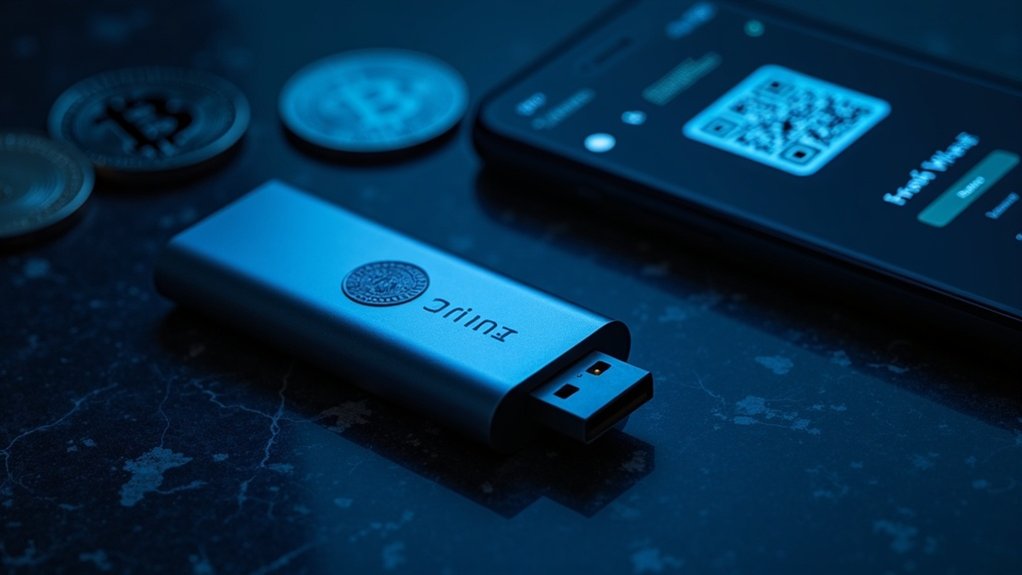Liquid staking dominates the crypto landscape, with Lido’s massive $13.9 billion TVL across three chains. Aave leads lending platforms while Uniswap reigns supreme among DEXs. Layer-1s like Solana and Hyperliquid are pushing transaction speeds to insane levels. Privacy coins aren’t dead—Monero’s still kicking at $5.89 billion. Multi-chain protocols are basically table stakes now. The siloed blockchain era? It’s gasping its last breath. The real money’s in what comes next.
The crypto landscape never sleeps. As we push deeper into 2025, liquid staking protocols continue dominating the field with Lido’s massive $13.9 billion TVL spread across three blockchains. Not too shabby. Rocket Pool follows with $1.7 billion locked in a single chain. These protocols let users earn rewards while keeping their tokens tradable. Capital efficiency at its finest.
Liquid staking dominates DeFi—Lido’s $13.9B across three chains proves crypto never rests, even as we venture through 2025.
In the lending arena, Aave reigns supreme with $4.5 billion TVL across nine chains. Users can borrow crypto or earn interest without those pesky middlemen getting in the way. JustLend isn’t far behind, controlling $3.7 billion primarily on Tron.
Compound and Summer.fi round out the major players, each managing well over a billion in assets. Governance tokens give holders actual say in protocol changes. Democracy in finance? Kind of.
DEXs remain vital infrastructure pieces. Uniswap leads the pack with $3.2 billion locked across eight chains. Its AMM model revolutionized how we swap tokens. Unlike Bitcoin’s fixed supply cap of 21 million coins, these protocols adapt to market demands.
Curve Finance specializes in stablecoin swaps with minimal slippage. Both have spawned countless imitators. Imitation, flattery, etc.
Layer-1 blockchains are evolving beyond basic functions. Solana processes a mind-boggling 65,000 transactions per second with fees under a penny. Ridiculous speed.
Avalanche and Cardano push boundaries in governance while Hyperliquid, the new kid on the block, sports a hefty $14.7 billion market cap despite its 1 billion token cap. Investors should note that market caps reflect current valuations, with Bitcoin leading at an impressive $2.35 trillion market cap.
Privacy coins like Monero (valued at $5.89 billion) use cryptographic magic to keep transactions anonymous. Not everyone wants their financial life on a public ledger, surprisingly enough.
Multi-chain support is no longer optional—it’s expected. Protocols stretching across ecosystems capture more liquidity and users.
The siloed blockchain era is ending. About time. As these protocols mature, interoperability and reliability challenges persist. The race continues, and nobody’s slowing down.
Frequently Asked Questions
What Are the Risks Associated With Investing in Crypto Protocols?
Investing in crypto protocols carries substantial risks.
Security breaches regularly target exchanges, with over $2.17 billion stolen in just half of 2025. Extreme price volatility can wipe out investments overnight.
Liquidity issues make selling difficult during crashes. Regulatory oversight remains limited, leaving investors without traditional protections.
Technical vulnerabilities like double-spend attacks exist, though they’re rare. The industry’s “wild west” nature means investors face unprecedented theft rates and structural weaknesses.
Not for the faint-hearted.
How Do Regulatory Changes Impact These Emerging Protocols?
Regulatory changes hit crypto protocols like a tidal wave. New classifications force teams to pivot overnight.
Securities laws? Compliance costs soar. Jurisdictional fragmentation? Global strategies get messy.
DeFi protocols face KYC/AML demands while trying to stay decentralized. Not exactly easy. Institutional money waits on the sidelines until rules clarify.
Meanwhile, smaller innovators get crushed by compliance costs while the big players adapt. Some protocols even redesign their tech to meet regulatory requirements.
It’s evolve or die.
What Technical Skills Do I Need to Interact With These Protocols?
Interacting with crypto protocols requires a tech toolbox.
Solidity is non-negotiable for Ethereum-based smart contracts. Python helps with workflows and automation. JavaScript powers dApp frontends. Understanding blockchain basics—distributed ledgers, consensus mechanisms, cryptography—isn’t optional.
Neither is knowledge of token standards like ERC-20. Experience with wallets, node operations, and smart contract testing rounds things out.
And yeah, staying updated on protocol changes. Tech moves fast. Really fast.
How Can I Spot Potential Crypto Protocol Scams?
Spotting crypto scams comes down to recognizing red flags.
Unrealistic returns? Run. Small deposits followed by “baiting” transactions are classic pig butchering tactics.
Watch for platforms preventing withdrawals—a dead giveaway.
Transaction patterns matter; legitimate protocols don’t show weird high-frequency patterns.
Blockchain analytics tools help identify suspicious wallets.
No verifiable team info? Another warning sign.
And remember, pressure tactics via WhatsApp groups? That’s what scammers do.
Not rocket science, just vigilance.
What Are the Tax Implications of Crypto Protocol Investments?
Crypto protocol investments face the same tax rules as other crypto. Taxed as property by the IRS. Simple.
Profits get hit with capital gains tax when selling or trading – short-term rates (held under a year) range from 10% to 37%, while long-term rates (over a year) drop to 0-20%.
Earning tokens through staking? That’s ordinary income.
And starting 2025, exchanges must report everything on Form 1099-DA. No escaping the taxman. Record-keeping is essential.









